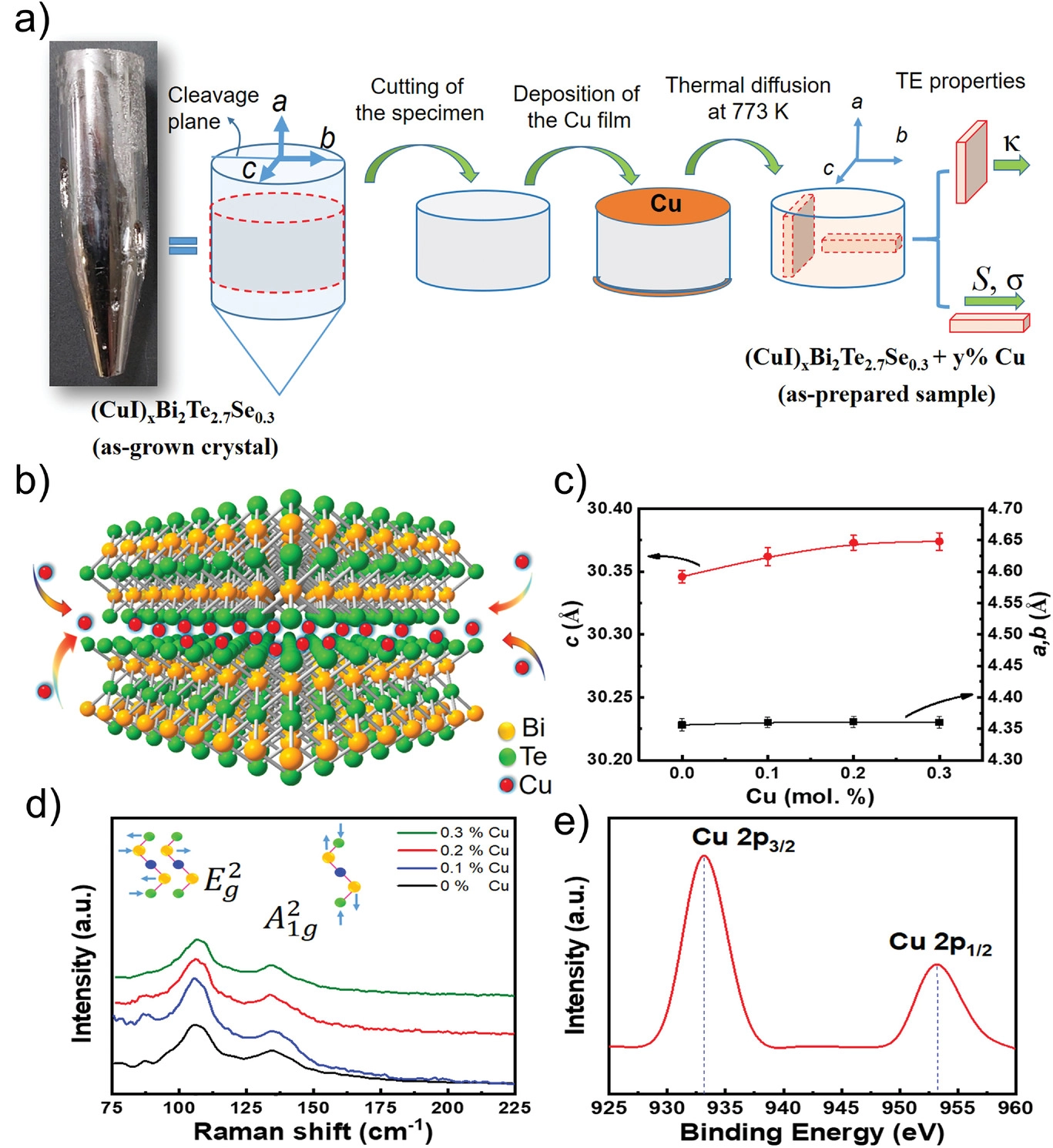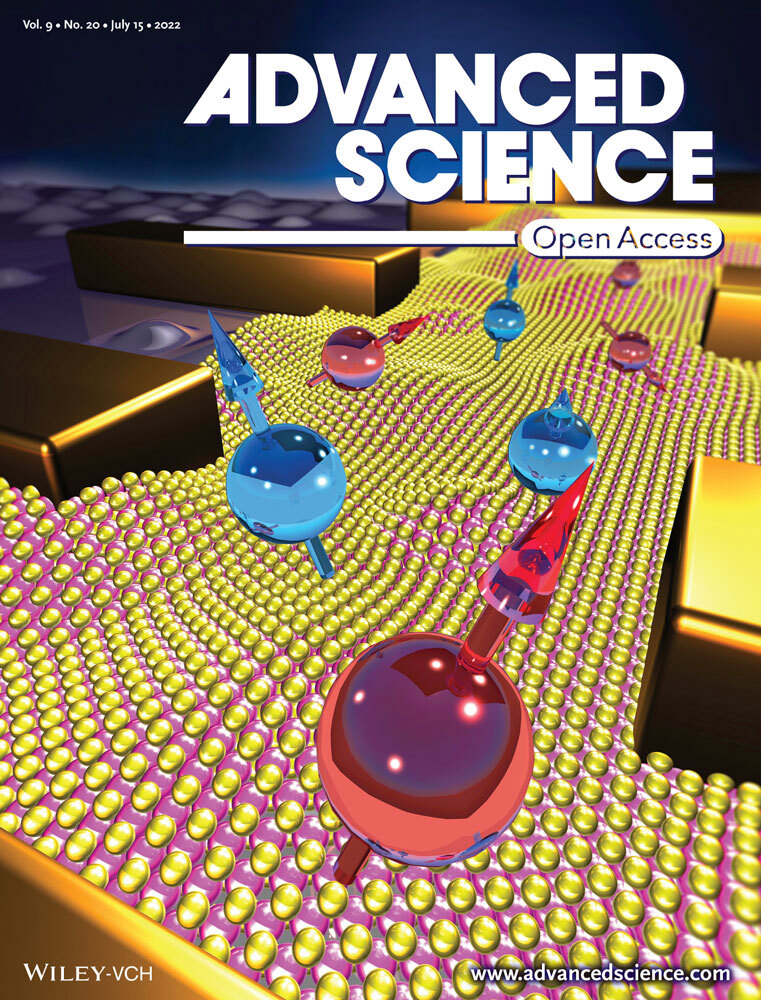Modulation Doping Enables Ultrahigh Power Factor and Thermoelectric ZT in n-Type Bi2Te2.7Se0.3
We report a new strategy to make it easier to control the intercalation of Cu atoms into the vdW gap of n-type Bi2Te2.7Se0.3 crystals via a thermal-driven approach, and investigate the corresponding TE properties.

Preparations and Characterizations of (CuI)0.002Bi2Te2.7Se0.3 + y % Cu crystals. a) The schematic diagram of the preparation process and transport measurements of Cu-intercalated samples. b) Illustration of the Bi2Te3
Technology Overview
This work presents an innovative strategy to synthesize n-type Bi2Te2.7Se0.3 crystals with exceptional TE performance via thermal-driven Cu intercalation in the vdW gaps. The intercalated Cu atoms act as modulation doping and contribute conduction electrons of wavefunction spatially separated from the Cu atoms themselves, which improves carrier mobility while maintaining the carrier concentration similar to that in the uniformly doped sample.
Applications & Benefits
Our work suggests that the intercalation of Cu atoms within the vdWs gaps in the layered structure is an effective approach to modulating phonon and carrier transport in n-type bismuth telluride-based materials.
Abstract:
Bismuth telluride-based thermoelectric (TE) materials are historically recognized as the best p-type (ZT = 1.8) TE materials at room temperature. However, the poor performance of n-type (ZT≈1.0) counterparts seriously reduces the efficiency of the device. Such performance imbalance severely impedes its TE applications either in electrical generation or refrigeration. Here, a strategy to boost n-type Bi2Te2.7Se0.3 crystals up to ZT = 1.42 near room temperature by a two-stage process is reported, that is, step 1: stabilizing Seebeck coefficient by CuI doping; step 2: boosting power factor (PF) by synergistically optimizing phonon and carrier transport via thermal-driven Cu intercalation in the van der Waals (vdW) gaps. Theoretical ab initio calculations disclose that these intercalated Cu atoms act as modulation doping and contribute conduction electrons of wavefunction spatially separated from the Cu atoms themselves, which simultaneously lead to large carrier concentration and high mobility. As a result, an ultra-high PF ≈63.5 µW cm-1 K-2 at 300 K and a highest average ZT = 1.36 at 300–450 K are realized, which outperform all n-type bismuth telluride materials ever reported. The work offers a new approach to improving n-type layered TE materials.

Modulation Doping Enables Ultrahigh Power Factor and Thermoelectric ZT in n-Type Bi2Te2.7Se0.3
Author:Cheng-Lung Chen, Te-Hsien Wang, Zih-Gin Yu, Yohanes Hutabalian, Ranganayakulu K. Vankayala, Chao-Chih Chen, Wen-Pin Hsieh, Horng-Tay Jeng, Da-Hua Wei, Yang-Yuan Chen
Year:2022
Source publication:Advanced Science Volume 9, Issue 20 July 15, 2022, 2201353
Subfield Highest percentage:99% General Engineering #2/297
https://onlinelibrary.wiley.com/doi/full/10.1002/advs.202201353